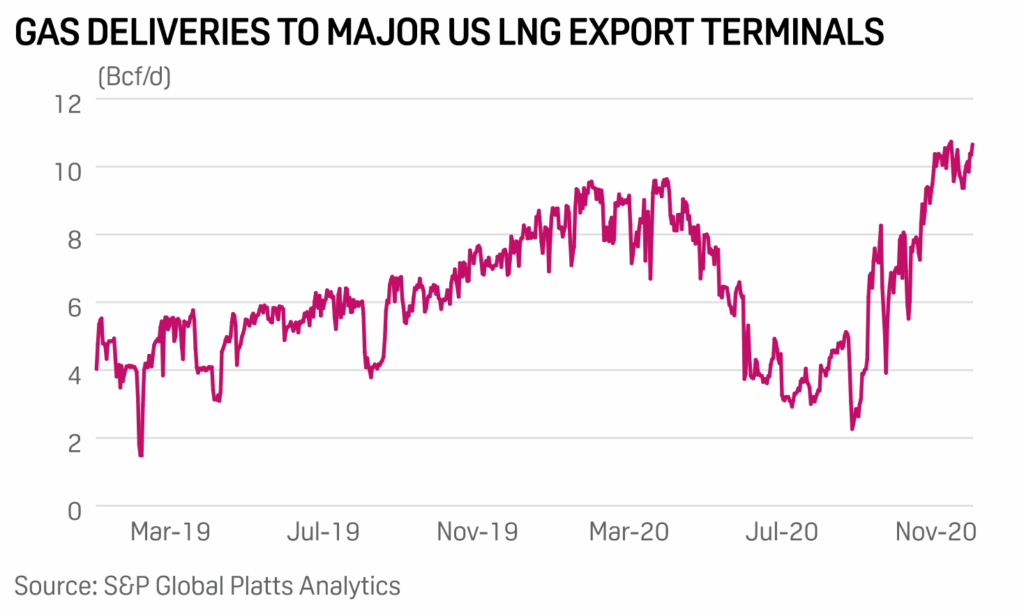Liquified natural gas (LNG) exports could hit a new high record in December, pushed by favorable netbacks, no cargo cancelations and robust demand in Asia. Pipeline flows have already hit highest record ever.
As we reported previously, LNG exports from the U.S have been on the rise the past several months; thanks to the competitiveness gained by natural gas in front of coal, but also by the expanding and resilient demand in Asia.
According to the latest Energy Information Administration forecast, LNG exports from the U.S. could average 8,4 billion cubic feet per day, in exports from December 2020, to February, 2021; which is 31% more than last year’s same period..
Data from Platts analytics show a tough performance on four out of the six major terminals in the country. By November 30, they totaled 10,6 billion cubic feet per day. Just one decimal down from the high record set in November 13 of 10,7 Bcf/d.
“With further ramp-up possible at Cheniere Energy’s Sabine Pass terminal in Louisiana; one of the 10 trains at Kinder Morgan’s Elba facility in Georgia still down due to a May fire, there is room for total flows to increase to closer to 11 Bcf/d in the days and weeks ahead,” the firm reports.
On December 1, gas flows from U.S terminals jumped to 11,2 billion cubic feet per day, the highest record since shale exports began in 2016.
Recommended for you: Biden’s administration could regulate silica dust at coal mines
Strong LNG exports to Asia, as prices rebound
As said before, strong Asian demand is also key for U.S LNG exports performance. Platts data show that, since April 28, spot prices for LNG in northeast Asia have nearly quadrupled from their historical low price of $1,825 MMBtus, on that date.
On November 30, JKM, benchmark for LNG prices in Asia, assessed at 25,7 cents per MMBtus, with a higher day by day of $7,7 per MMBtus. So, led by this strong uptick in JKM, US LNG exports to Asia increased over the past months.


“The JKM is now trading at a roughly $2/MMBtu premium to the Dutch TTF on a US netback basis; suggesting that the Asian markets will continue to attract cargoes and could keep volumes flowing to Europe subdued below last year’s levels,” Platts explain.
Experts and market watchers consider that, while US LNG has recovered from the demand destruction that the covid-19 pandemic provoked on the market, there’s still room for risk; especially with the virus resurging in Asia and Europe.
Platts data show that nearly 175 cargoes of LNG were cancelled between April and November. In this regard, rebound in pricing will be a key aspect for LNG’s performance and the opening of new terminals in 2021.

